Sautéing is a simple cooking method that can turn a weeknight meal into magic! Follow this easy guide and learn how to sauté your favorite foods.
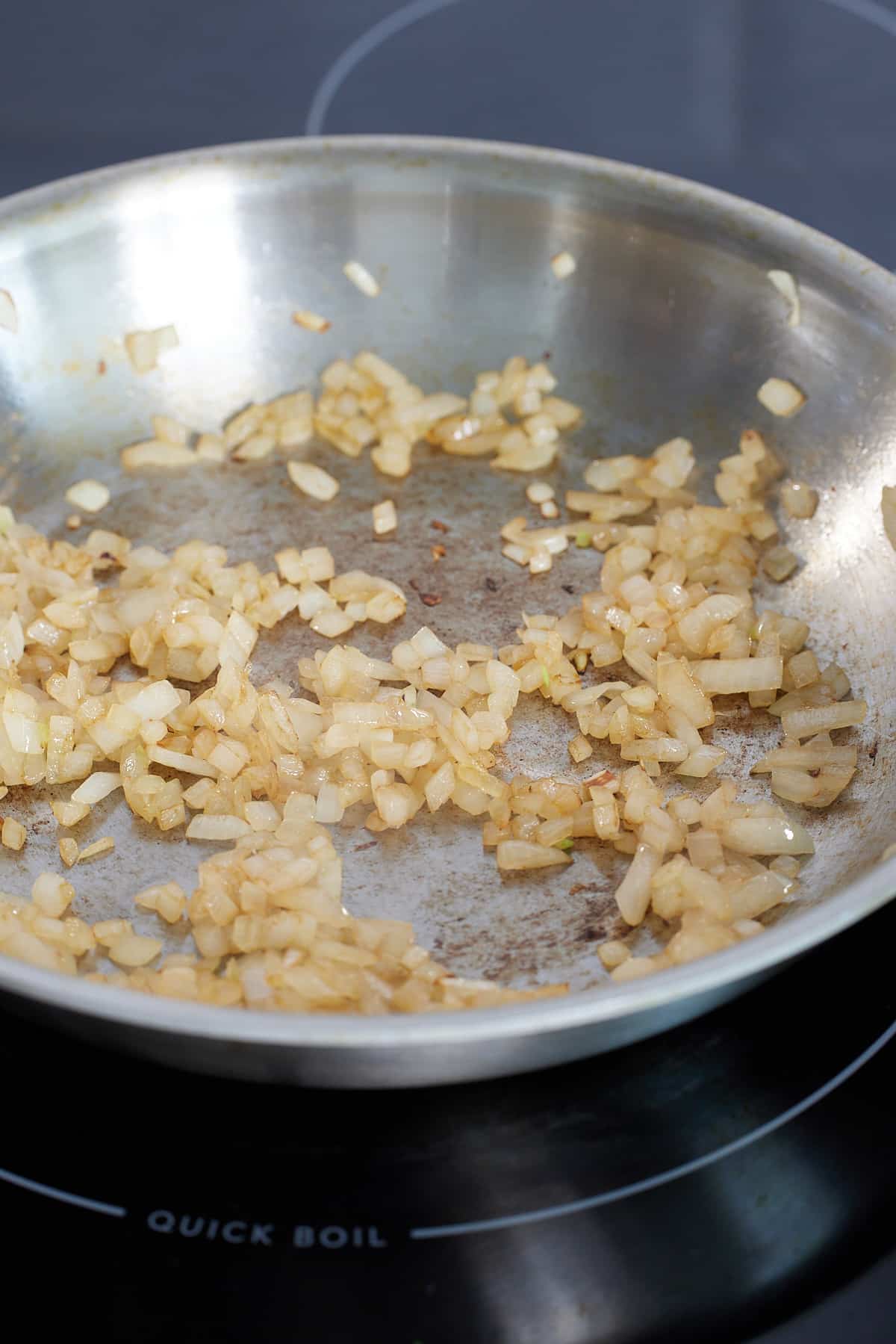
Learning how to saute is one of the most valuable skills a home cook can have. This quick and easy cooking method isn’t just great for weeknight meals, it’s great for giving meats, vegetables, and other food items a wonderful golden-brown crispness!
Sautéing can turn everyday kitchen staples into flavorful meals in a matter of minutes. Once you learn how to properly sauté, you will have endless options when it comes to preparing stovetop vegetables, meats, and seafood.
When following a recipe, you'll usually see "sauté the onions" as an initial step. It's helpful to know exactly what that means and how it's done. Additionally, many vegetables, meats, and seafood can be sautéed.
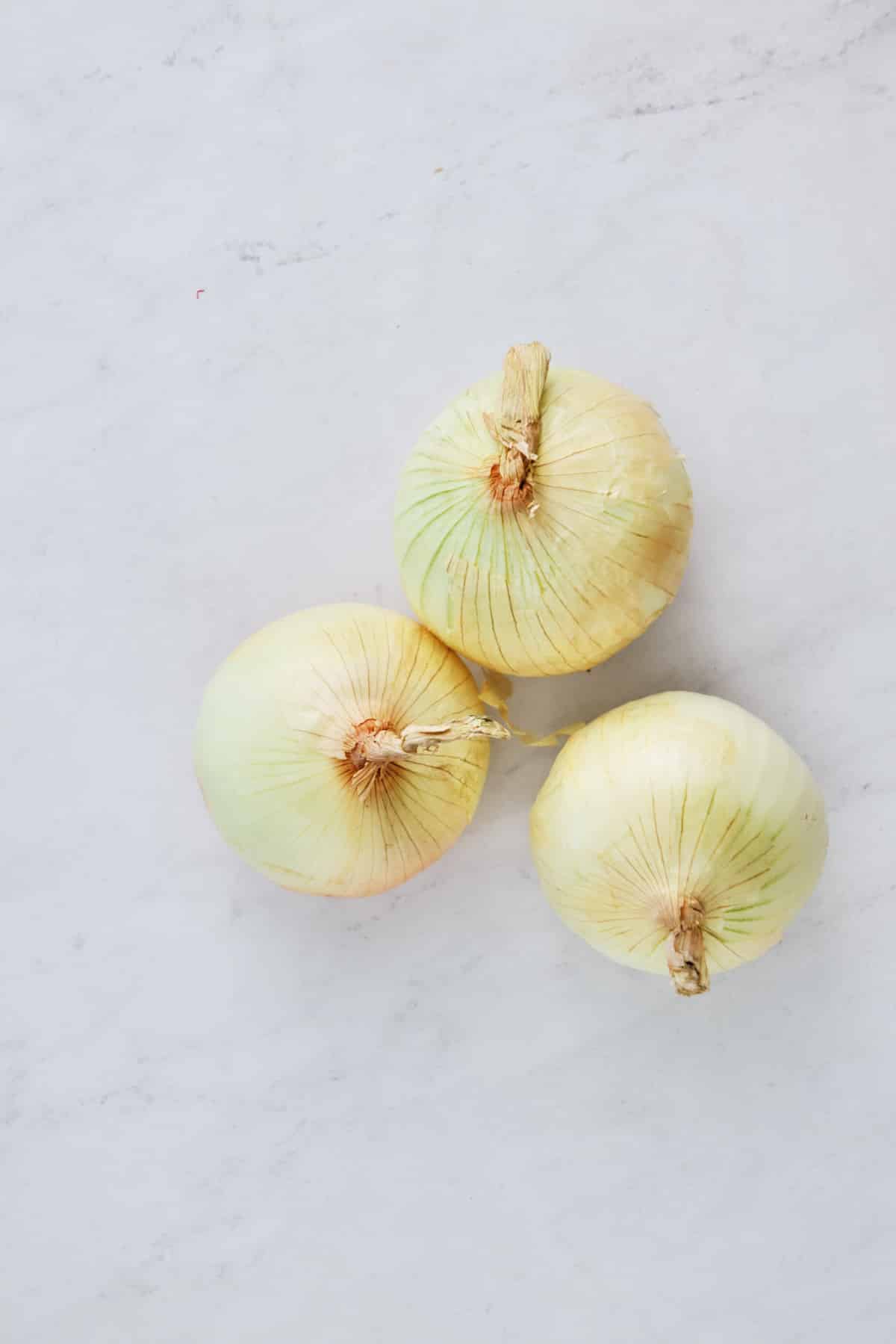
What is sautéing?
Sautéing is the cooking of food in a shallow pan with a small amount of fat - basically, oil or butter. Chefs love sautéing because it cooks food quickly while retaining moisture, enhancing flavor, and browning for added texture. If you’ve enjoyed crispy sauteed shrimp with butter, then you understand the benefits of sautéing - yum!
Sauteeing is one of the main stovetop cooking techniques that is the base for many recipes.
The word ‘sauté’ comes from the French word ‘to jump’, because the oil or butter in the sauté pan should “jump” and sizzle when the ingredients are added to the pan. That makes sense, right?
Sauteeing will usually involve butter or oil. The fat in the pan is essential for browning meats and acts as an effective way to heat the pan while preventing items from sticking to the surface. But there are other cooking methods that involve pans, oil, and butter, so what’s the difference between sautéing, frying, searing, and sweating?
Sauté vs fry
When it comes to sautéing vs. frying - and searing, the differences all come down to how much fat is in the pan, and the cooking temperature. Adding more oil to the skillet, and cooking at a lower temperature for longer is the key to great pan-fried recipes. While searing involves using high heat to brown meats, or form a crust - on a steak or a roast, for example.
Saute vs sweating
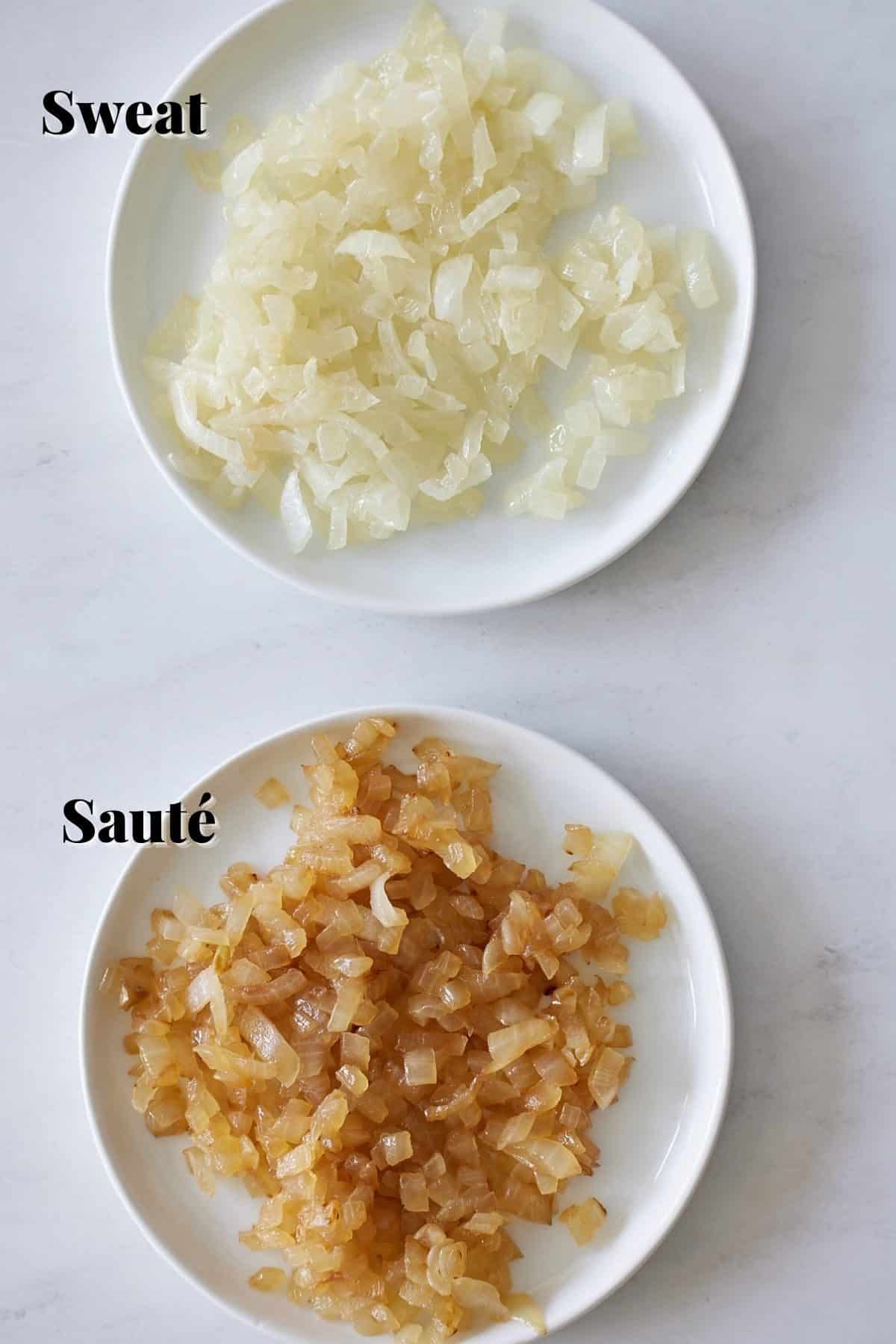
Sweating often gets confused with sauteing. Sweating involves cooking food, mainly vegetables, like onions, in a shallow pan with a small amount of fan, but over low heat. The purpose of sweating is to soften the vegetables without browning. Sweating vegetables is often best when you want to release some flavor and liquid from the vegetables without browning them. Sweating will generally take longer to soften the vegetables than sauteing.
Sauté Temperature Cheat Sheet
| Searing | high-heat |
| Sautéing | medium-high heat |
| Pan-frying | medium-heat |
What kind of pan to use for sautéing?
Pan size: One of the keys to a good sauté is using a pan that allows enough room for your ingredients to move around - in other words, don’t crowd the pan. Using the correct size pan to sauté helps your food cook and brown at the same speed, so you get the same result. You'll typically want to grab a 10-12 inch skillet when sautéing.
Pan type: Stainless steel, cast iron skillets, or aluminum frying pans all work well for sautéing and browning foods. A non-stick pan can sauté well but it won't be the best in browning. Non-stick sauté pans are the perfect pan for sautéing fish because they help maintain that delicate fish texture.
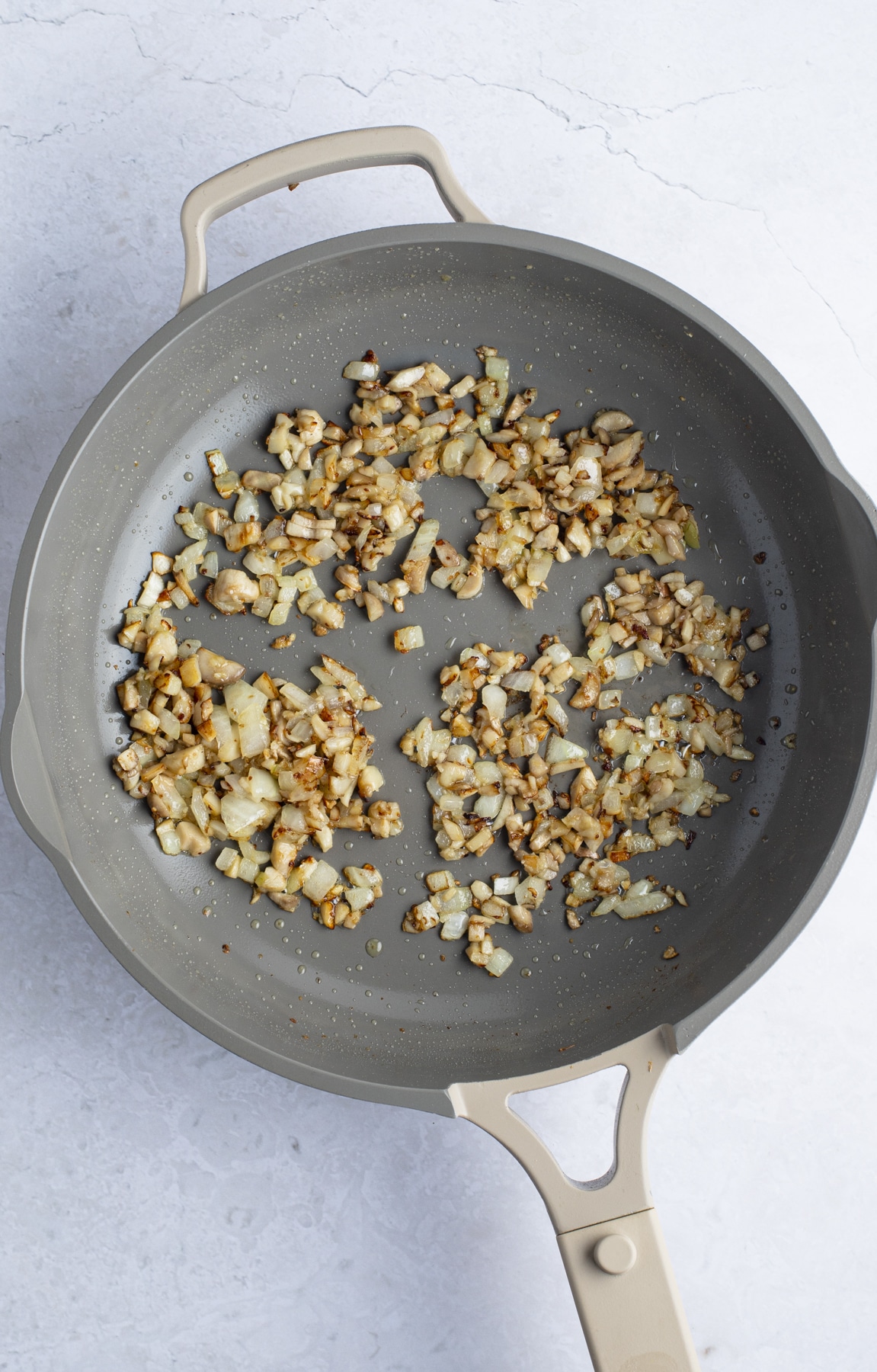
What type of oil to use for sautéing
The type of oil you use to sauté really comes down to personal preference and smoking points. Olive oil, canola oil, coconut oil, avocado oil, and grapeseed oil are all popular and have high smoke points. Some home cooks prefer grapeseed oil because it has a more neutral flavor than olive oil, and can be heated to a higher temperature without smoking.
And, don’t forget - you can always use a few tabs of delicious butter, ghee, or duck fat to sauté! Whether you use oil or another type of fat when you sauté, just remember that less is more. Use just enough oil to lightly coat the bottom of the pan. If you find that your ingredients are sticking to the pan, you can always add a bit more as you cook, just don’t overdo it.
If using fats or oils with a low smoke point, like butter, make sure to keep the heat over medium heat. Cranking the heat too high may cause the oil to burn and leave a bitter taste in your entire dish.
Can you sauté without oil?
Although the definition of the word sauté includes cooking in oil, many home cooks may find they can avoid using oil if they use the right tools. Water, stock, or a little liquid can be used to sauté in place of fat. Just make sure to use a non-stick pan in these incidences to avoid your food sticking.
A step-by-step guide to sautéing
- Before you add your meat or vegetables, remove any excess moisture to prevent the food from steaming
- Then, heat the sauté pan. A minute on medium-high heat is a good rule of thumb. This process of heating your pan first will ensure your food does not stick. Just be careful and make sure your pan does not get too hot.
- Add the fat and allow it to warm in the pan. You’ll know the oil or butter is ready when it starts to shimmer. If your oil or butter begins to smoke, remove it, allow the pan to cool and wipe it clean, and start over.
- Now you’re ready to sauté!
How to sauté vegetables
Perfectly sauteed vegetables are a thing of beauty!
- Add the vegetables to the pan and spread them evenly across the surface.
- Stir the vegetables until all of the pieces are coated with oil.
- Continue moving the vegetables every few minutes until they’re tender, and just a little crispy and crunchy on the outside.
How to sauté meat
Sautéing meat is easier than you think!
- To sauté meat, follow the same instructions above, making sure the pieces of meat are evenly coated with oil.
- If you find the meat is browning too quickly, or sticking to the bottom of the pan, reduce the heat.
- Once the meat has achieved a nice golden brown texture, check the internal temperature with a meat thermometer for doneness.
- For a quick reference, the internal temperature of the most frequently sauteed meats are:
- chicken - 165°F
- pork chops - 145°F
- steaks - 145°F
- ground beef - 165°F
How to sauté fish
Fish is delicate and needs to be treated a tad bit differently. When cooking thin fish filets, cook pieces over lower heat in a non-stick pan to ensure they don't overcook. for thicker filets, higher heat may be used.
More tips on saute
- Make sure any food you sauté is cut into uniform pieces to ensure they cook evenly.
- Make sure to pay careful attention to the food while cooking when it comes to sautéeing. Foods cooked over higher heat can burn quickly if not watched.
- Use wooden tools, like a wooden spoon, or spatula when stirring food in a skillet, especially non-stick skillets to keep the pans lasting longer.
- Avoid using high temperatures if using nonstick pans.
I hope this guide helps you in your cooking journey. Need more helpful cooking guides, check these out:

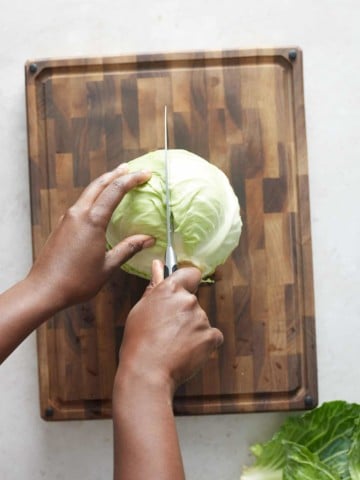
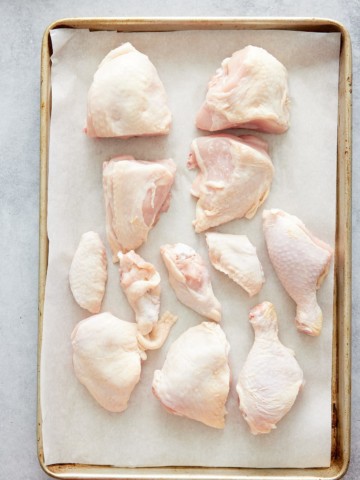
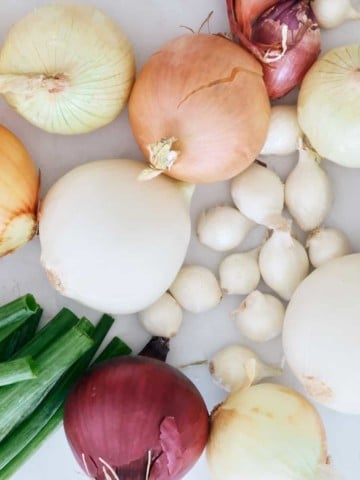
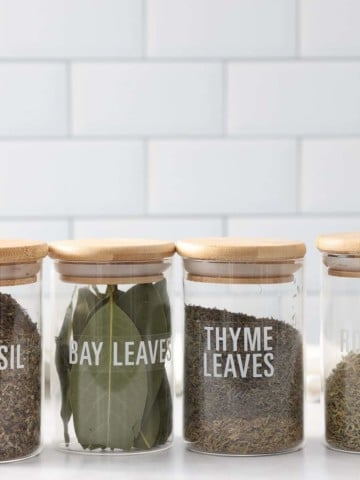
Leave a Reply